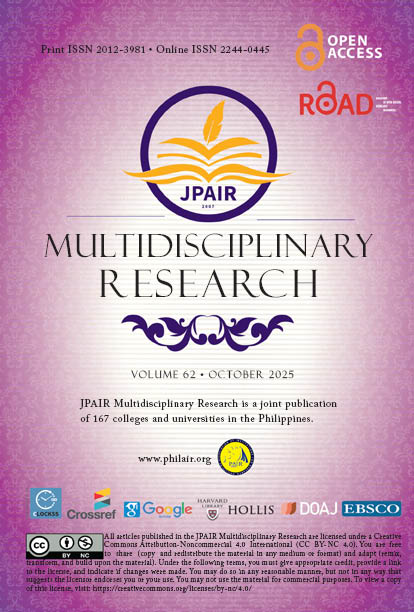Data Analytics and Machine Learning Applications for Remote Management Systems (RMS) In Telecommunications Infrastructure
DOI:
https://doi.org/10.7719/jpair.v62i1.959Keywords:
Anomaly detection, data analytics, ISO 25010, machine learning, remote management systems, root cause analysis, system quality evaluation, telecommunications infrastructureDisciplines:
Data Science, Machine Learning, TelecommunicationsAbstract
This paper presents a data-driven framework designed to enhance Remote Management Systems (RMS) in telecommunications infrastructure through the application of data analytics and machine learning (ML) techniques. The proposed solution does not require additional hardware; instead, it utilizes existing RMS data streams and applies advanced processing algorithms to address key challenges in anomaly detection and root cause analysis. The framework was deployed and validated across 1,004 telecom sites, resulting in significant operational improvements: a 40% reduction in mean time to repair (MTTR), a 25% decrease in maintenance costs, and enhanced network reliability with 99.98% system availability. The anomaly detection module demonstrated 85% accuracy in identifying abnormal air conditioning unit (ACU) cycling patterns, with a 76% reduction in false alarms. Using a hybrid ML approach that combines supervised learning, unsupervised clustering, and correlation analysis, the system accurately detects complex operational issues such as abnormal cycle speeds and irregular fuel consumption. Additionally, it effectively identifies and corrects anomalies related to critical remote terminal (CRT) faults, including DC mains failures. Historical incident data is leveraged to support pattern recognition for accurate root cause analysis, achieving 83.3% accuracy. The framework also aligns with sustainability goals and adheres to ISO 25010 standards for system quality evaluation, offering both operational and environmental benefits.
Downloads
References
Ahmed, S., Ahmed, I., Kamruzzaman, M., & Saha, R. (2022). Cybersecurity Challenges in IT Infrastructure and Data Management: A Comprehensive Review of Threats, Mitigation Strategies, and Future Trend. Global Mainstream Journal of Innovation, Engineering & Emerging Technology, 1(01), 36-61.
AlHaddad, U., Basuhail, A., Khemakhem, M., Eassa, F. E., & Jambi, K. (2023). Ensemble model based on hybrid deep learning for intrusion detection in smart grid networks. Sensors, 23(17), 7464.
Alahakoon, D., & Yu, X. (2013, November). Advanced analytics for harnessing the power of smart meter big data. In 2013 IEEE International Workshop on Inteligent Energy Systems (IWIES) (pp. 40-45). IEEE.
Published
Issue
Section
License
Copyright (c) 2025 John Paolo Yu, Samson G. Melitante, Maylen G. Eroa

This work is licensed under a Creative Commons Attribution-NonCommercial 4.0 International License.
Open Access. This article published by JPAIR Multidisciplinary Research is licensed under a Creative Commons Attribution-Noncommercial 4.0 International (CC BY-NC 4.0). You are free to share (copy and redistribute the material in any medium or format) and adapt (remix, transform, and build upon the material). Under the following terms, you must give appropriate credit, provide a link to the license, and indicate if changes were made. You may do so in any reasonable manner, but not in any way that suggests the licensor endorses you or your use. You may not use the material for commercial purposes.





















